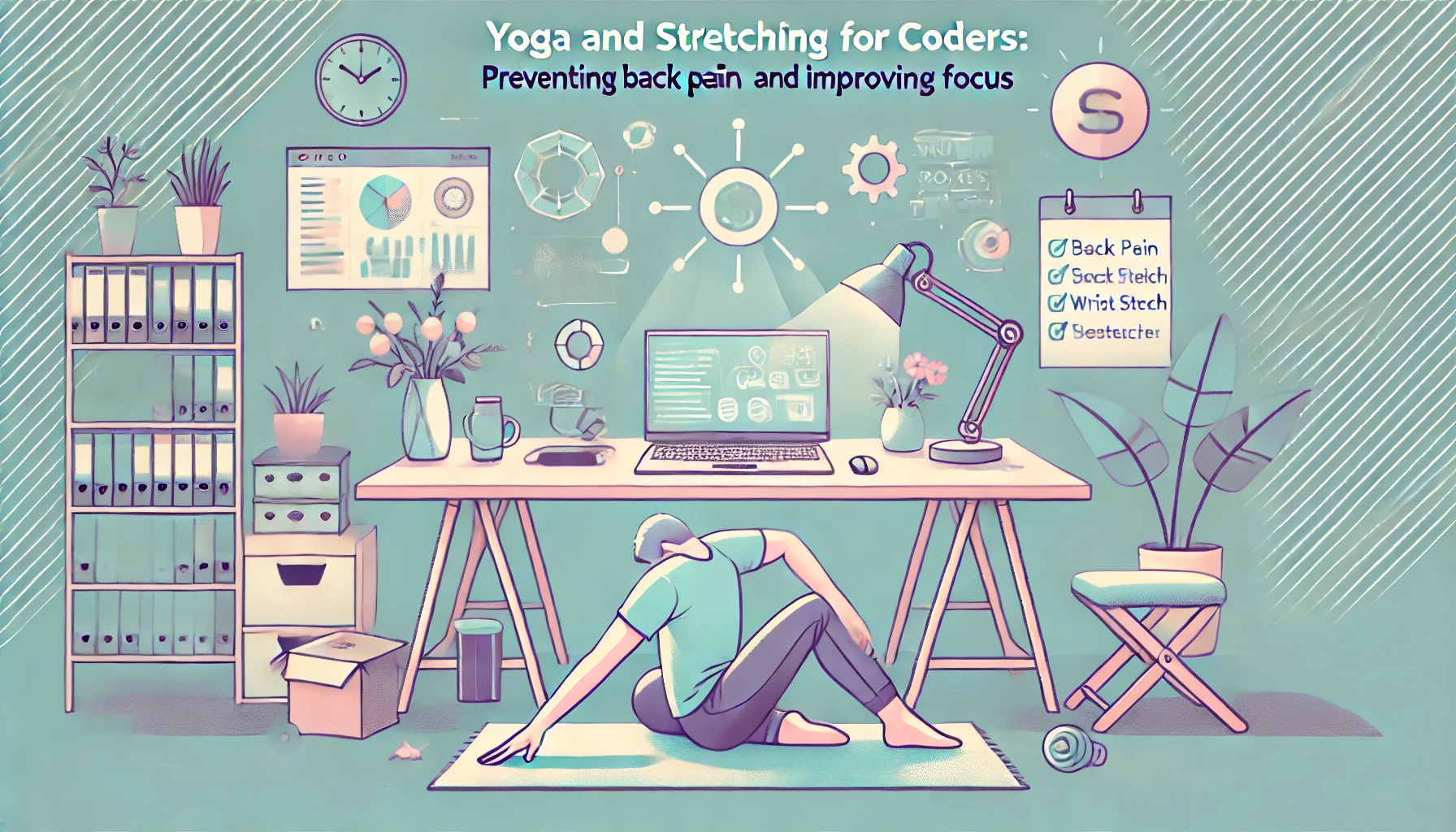
As a coder, you're no stranger to long hours spent in front of your screen, typing away and debugging code. But all that time spent sitting can take a toll on your body. From stiff necks and sore backs to tired eyes and foggy brains, the physical strain of coding can affect your overall well-being and productivity. That’s where yoga for coders comes in! Incorporating simple yoga and stretching routines into your daily routine can not only help prevent discomfort but also improve focus, boost energy, and enhance mental clarity.
In this post, we’ll guide you through a few easy yoga poses and stretches that are designed specifically for coders to counteract the strain of long hours at the desk. Whether you’re working from home or in the office, these quick routines can be done anywhere to keep your body and mind in top shape.
Why Yoga and Stretching Matter for Coders
Long hours of sitting can lead to muscle tension, poor posture, and a range of physical issues like back pain and carpal tunnel syndrome. Yoga and stretching routines help alleviate these problems by:
- Increasing Flexibility: Regular stretching and yoga can help improve your posture and increase flexibility, making it easier to sit comfortably for longer periods.
- Reducing Muscle Tension: Yoga poses are designed to release tension in areas where coders typically hold stress—like the shoulders, neck, and back.
- Boosting Mental Clarity: Yoga encourages mindfulness, which can improve your focus, reduce brain fog, and help you stay productive.
- Preventing Long-Term Damage: Simple stretches and yoga can reduce the risk of developing chronic issues like repetitive strain injuries (RSIs) or lower back pain.
Quick Yoga and Stretching Routine for Coders
You don’t need to spend hours on a yoga mat to feel the benefits. These simple stretches and yoga poses can be done in just a few minutes during your breaks to keep your body loose and your mind clear.
1. Seated Cat-Cow Stretch (For Spine Mobility)
This stretch is great for easing tension in your lower back and improving spinal mobility.
- Sit up tall in your chair with your feet flat on the floor.
- Place your hands on your knees or thighs.
- Inhale as you arch your back, lifting your chest and gaze toward the ceiling (Cow Pose).
- Exhale as you round your back, tucking your chin to your chest (Cat Pose).
- Repeat for 5-10 rounds, moving slowly with your breath.
Why it Works: This stretch helps relieve tension in the spine and neck, which is common after long hours of coding.
2. Shoulder Rolls (For Neck and Shoulder Tension)
The shoulders are a common area where coders carry tension. This simple exercise helps release that built-up stress.
- Sit up straight, relaxing your shoulders.
- Slowly roll your shoulders forward in a circular motion 5-10 times.
- Then reverse the motion and roll your shoulders backward for another 5-10 rounds.
Why it Works: Shoulder rolls help alleviate stiffness and tension in the upper back and neck, preventing tightness and discomfort.
3. Wrist and Forearm Stretch (For Carpal Tunnel Relief)
Frequent typing can strain the wrists and forearms. This stretch targets those muscles to prevent stiffness and repetitive strain injuries.
- Extend your arm in front of you with your palm facing outward.
- With your opposite hand, gently pull back on your fingers, stretching the forearm and wrist.
- Hold for 15-30 seconds, then switch sides.
- Repeat 2-3 times on each side.
Why it Works: Stretching the wrists and forearms helps prevent injuries like carpal tunnel syndrome, which is common among coders.
4. Seated Forward Fold (For Lower Back and Hamstrings)
This stretch targets the lower back and hamstrings, areas that often get tight from prolonged sitting.
- Sit on the edge of your chair with your feet flat on the floor and hip-width apart.
- Slowly hinge forward from your hips, reaching toward the floor or your toes.
- Keep your back flat and your neck relaxed.
- Hold for 30 seconds, then slowly return to an upright position.
Why it Works: This pose helps relieve lower back tension, stretch the hamstrings, and improve flexibility.
5. Standing or Seated Twist (For Spine and Chest Opener)
This simple twist helps improve spinal mobility and opens up the chest, which can become tight from slouching at your desk.
- Sit or stand tall with your feet hip-width apart.
- Place your right hand on the back of your chair or armrest and twist your torso to the right.
- Hold for 15-30 seconds, then repeat on the other side.
- Breathe deeply and gently deepen the twist with each exhale.
Why it Works: Twisting helps to release tension in the spine and improve flexibility while opening the chest.
Bonus Tip: Breathing Exercises for Mental Clarity
Along with the physical stretches, practicing deep breathing exercises can help clear your mind and increase focus.
- Sit comfortably and take a slow, deep breath in through your nose for a count of 4.
- Hold the breath for a moment, then slowly exhale for a count of 6.
- Repeat for 3-5 minutes.
Why it Works: Deep breathing exercises activate the parasympathetic nervous system, helping to reduce stress and improve mental clarity.
Stay Comfortable, Focused, and Productive
Yoga and stretching for coders are essential for maintaining physical health and mental focus. By incorporating these simple stretches and poses into your daily routine, you’ll feel more relaxed, focused, and productive. Whether you're working from home or in the office, these quick yoga sessions can prevent strain and help keep your mind sharp. So take a few moments to stretch, breathe, and refocus—the benefits will speak for themselves!




